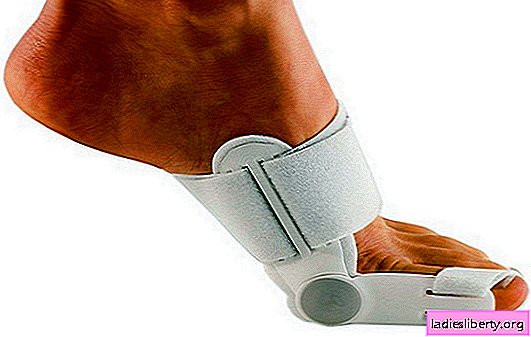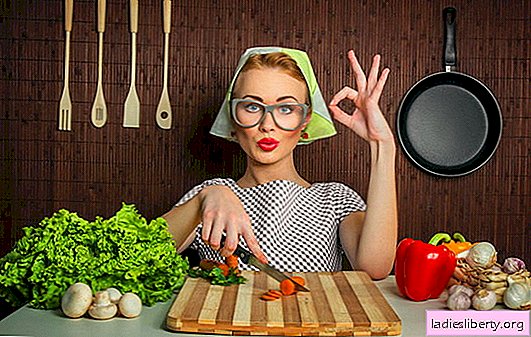
Shrimps are the inhabitants of the seas and freshwater bodies of crustaceans that are widespread throughout the world.
These arthropods come in various sizes, reaching a maximum length of 30 cm.
In the waters of the Far East, the catch of shrimp has an industrial scale, there are more than 100 species of them.
Chemical composition and caloric content of shrimp
The nutritional value of 100 grams of shrimp is approximately 87 kcal (but if this seafood is fried in oil, the caloric content rises to 242 kcal). Due to its composition, shrimp meat is not only a delicious delicacy, but also a useful product.
There is an opinion that daily consumption of tender crustacean meat is very beneficial for health, to maintain the figure in the shape of, to keep your mind bright and strong memory. According to statistics, people who include fish and seafood on a daily basis are healthier, more enduring and have a longer life span than those who don’t eat at all or eat in small doses.
The product includes:
• proteins;
• Water;
• Fat;
• Saturated fatty acids;
• Carbohydrates (small amount).
The vitamin composition of shrimp is rich and diverse.Includes most of the daily dose required for the full body vital activity:
• Vitamin PP (2 mg / 100 g)
• Vitamin E (2.3 mg / 100 g)
• Vitamin A (16, 01 µg / 100 g)
• Thiamine (vitamin B1) (0.06 mg / 100 g)
• Riboflavin (vitamin B2) (0.07 mg / 100 g)
• Vitamin B5 (0.35 mg / 100 g)
• Pyridoxine (0.1 mg / 100 g)
• Vitamin B9 (13 µg / 100 g)
• Vitamin B12 (0.85 µg / 100 g)
Macro and trace elements included in the chemical composition of shrimp:
- Calcium;
- sulfur;
- phosphorus;
- magnesium;
- potassium;
- sodium;
- iron;
- zinc;
- manganese;
- molybdenum;
- cobalt;
- zinc;
- selenium;
- iodine.
What benefits do shrimps bring to the body?
Shrimps - seafood, incorporating vital elements. For example, iodine necessary for the production of a hormone in the thyroid gland, calcium - building material for bones; sulfur regulates the sebaceous glands and participates in the construction of connective tissues. Polyunsaturated fatty acids (Omega-3 and Omega-6), included in the composition of shrimp, are valuable components that improve the functioning of the heart, increase the elasticity of blood vessels, reduce the risk of developing such life-threatening diseases as cancer, heart attack and stroke. The organism cannot synthesize these acids independently, therefore, they must come from the outside, with food intake.
Cholesterol, which is part of the shrimp, is able to scare away those who want to eat delicious meat. But is it worth being afraid? Studies have shown no. Cholesterol is important for the body within acceptable limits. It is an integral part of cell membranes, provides production of serotonin “antidepressant”, synthesizes adrenal hormones - hydrocortisone and aldosterone. Still, people with high cholesterol should have a shrimp to eat very sparingly, increasing the level of cholesterol can lead to the formation of plaques.
Astaxanthin - unique antioxidantincluded in the shrimp. It is five hundred times stronger in terms of the effects of vitamin E, 10 times stronger than the antioxidants found in fruits. It has a beneficial effect on the health of the body, protects cells from premature aging, neutralizes stressful conditions, removes toxins. Antioxidants are indispensable in the treatment of rheumatism, rheumatoid arthritis, gout, varicose veins and many other diseases.
By eating protein-containing shrimp, collagen is produced in the body, which improves skin elasticity, gives it a healthy color, improves the condition of nails and hair, slows down the formation of wrinkles.
In general, shrimps, like other seafood, are invaluable for the body, prolong youth, improve health, increase vitality.
Harm shrimp for humans
In rare cases, shrimp, like all seafood, can cause health problems against the background of individual intolerance or an allergic reaction to substances in their composition.
Despite the fact that these crustaceans have a low calorie content, it is worth minimizing their use in fried form. With this treatment option and caloric content increases significantly, and a negative impact on the digestive system.
When choosing a product you should pay attention to the data on the country - the manufacturer. Seafood from Asian countries (for example, Thailand or Vietnam) can be grown artificially. with the use of hormones, growth stimulants, antibiotics. Naturally, this will significantly change the chemical composition of shrimp meat. In addition, seafood can accumulate heavy metals, which is hazardous to health.
The degree of freshness is an important point, which also has great importance. A stale product or a product with impaired storage can cause an upset stomach or poisoning of varying severity.
How to choose shrimp? Useful tips
When choosing shrimp in retail outlets, pay attention to the following:
• If the shrimp's head is dark - the product is not fresh, not suitable for human consumption;
• White stripes on the shell indicate that the shrimp frostbitten;
• Fresh shrimp has a slightly wet shell, if it is dry - old seafood;
• Hilly surface of the body, yellow spots signaling that the chemical composition of the old shrimp was tried to reanimate, which is unlikely to have a beneficial effect on health.
Fresh shrimps have a nice color, there are no spots, the shell is moist. If the shrimp is fresh-frozen - it retains its shape and is covered with a thin crust of ice. The abundance of ice indicates repeated freezing and thawing, which is unacceptable for a high quality product. Choose only high quality and fresh seafood from proven manufacturers!
Shrimp in the children's diet: good or harm?
Pediatricians do not agree on the age at which seafood (in particular, shrimp) can be introduced into the child’s diet. But still, most children's doctors do not recommend giving children shrimp before they reach the age of three for a number of reasons.
First, on the elements that make up the shrimp, may be allergic. You should give the child a small amount of the product (50-60 grams) for testing and observe the reaction of the body. In the future, the portion can be gradually increased, if not revealed allergic reactions.
Secondly, before you allow your child to enjoy a seafood delicacy, make sure it is absolutely fresh. It is better if sea delicacies are grown in a natural ocean environment, and not on a farm.
Thirdly, avoid overeating. You can consume 1-3 times a week.
Rich vitamin complex, macro-and micronutrients, protein, which are part of this seafood are very valuable for the child's body. All seafood must be gradually introduced into the feed when the baby reaches three years of age.
Shrimp in recipes
Shrimps are eaten both as an independent dish (boiled, fried, stewed), and as part of other dishes - soups, salads, sauces, etc.
Frozen shrimp require special, gradual defrosting in the refrigerator. Throwing them into boiling water frozen or using a microwave to speed up the process is not correct. Boil these seafood for 2-3 minutes in salted water. If you digest (more than 5 minutes), the meat will become "rubber" and lose its inherent tenderness.
Some housewives prefer to heat steamed boiled-frozen shrimps or eat them immediately after thawing without additional heat treatment.
Shrimps can be used in the preparation of dietary and low-calorie salads, broths, soups and other dishes. Below are some of the recipes.
Salad with shrimp and avocado
A bunch of lettuce break into a deep plate. Add 10-12 pieces of boiled chilled shrimps, sliced avocado slices. Sprinkle with the juice of half a lime, salt and add 1 spoon of olive oil. Decorate the salad with quail egg halves and cherry tomatoes.
Vegetable Salad with Shrimps
- shrimp 200-250 g;
- Tomato 1 pc .;
- Arugula 1 bundle;
- Fresh cucumber 1 pc .;
- parsley, dill on several branches;
- olive oil;
- lemon juice;
- ground black pepper;
- salt.
Cucumbers and tomatoes cut into cubes, add peeled shrimp and chopped arugula. Salt, add pepper, chopped greens, sprinkle with lemon juice, pour with olive oil. Arugula can be replaced with leaf lettuce, in this case, break it and put it on the bottom of the plate. Salad ready!
Cheese puree soup with shrimps
• Shrimp 150-200 grams;
• 2-3 medium potatoes;
• 1 small pepper (sweet);
• cauliflower inflorescences 150-200 g;
• parsley and dill;
• processed cheese (preferably cheddar or soft melted cheese);
• salt.
In salted boiling water throw potatoes (diced), carrots, sweet peppers, divided into cauliflower inflorescences. When the vegetables are cooked until tender, let them cool and chop with a blender.
Add the broth to the ground vegetables, rub the processed cheese into the broth, bring to the boil. Pour into plates, in each put a few boiled peeled shrimp, sprinkle with herbs.
Enjoy your meal!











